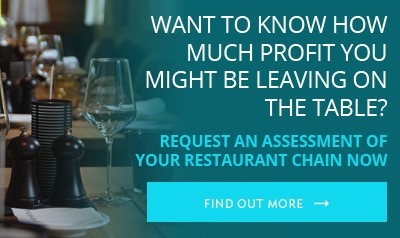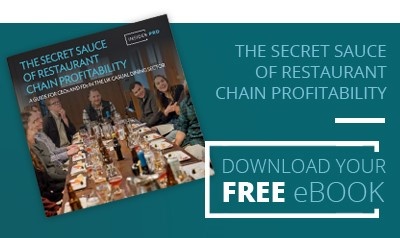RevPASH (Revenue Per Available Seat Hour) is a great KPI for comparing revenues between different restaurants in a chain and different time periods.
Those who focus on improving RevPASH, are constantly looking at ways to drive up sales - more diners, more meals, more sides, more drinks, more recommendations, more social shares...more revenue.
But what about the overall goals of the business? Isn't one of them to make a profit for the shareholders?
Growth at the expense of profit has seen the demise of many businesses, particularly in recent years in the UK casual dining market. Prezzo, Jamie's Italian, Byron and other big names have closed restaurants citing poor profitability as a contributing factor.
So, let's consider what would happen if, instead of RevPASH, you based your KPIs and business decisions on PROFIT PER SQUARE FOOT.
There are two parts to this:
- improving profit (increased revenue and/or reduced costs)
- measured by square foot (not available seat / hour)
Let me explain :
Focusing on profit gives us two numbers to deal with - increased revenue and reduced costs - and applying old school thinking to this you would again be asking "How do I increase sales?", and you would be asking "How do I reduce costs?".
You probably do that already.
But a quick look at the competitive landscape, tells us it's not that simple.
As well as other restaurant chains competing for the consumer £, there's an ever increasing set of disruptors in the UK casual dining market:
- delivery services like Deliveroo and UberEats
- drive-throughs
- take-aways
- robotic kitchens
- street food markets
- and more...
are all vying for a share of the consumer purse.
Added to that consumers are demanding an "experience" as well as food. It's no coincidence that some of the fastest growing chains have invested in giving consumers a unique experience.
Mowgli, for example, hit the Fast Track 100 in 2018 with a growth rate of 106.05%.
Their focus is to bring Indian "home cooked" and "street food" to the UK, served in traditional tiffins. It's far removed from the traditional hushed Indian restaurant experience, and instead of mainly meat-based curries offers healthy, often vegan, fresh flavoured alternatives.
Turtle Bay provides the vibrant party atmosphere people look for on occasion, and double-digit growth chain Leon focuses on plant-based healthy eating.
But, whilst differentiation is key to driving revenue, we still need to address the question of creating profit.
So, what could you do with every square foot of every restaurant to deliver more profit?
- Should you carve out space for a take-away queue?
- Should you remove bar space in favour of more dining tables?
- What if you dedicate part of the kitchen to delivery?
- Or should the whole building be used in a completely different way?
RevPASH wouldn't prompt you to ask those questions.
Profit per square foot, however, calls management teams to question the best, most profitable use of one of the highest cost business assets.
Food for thought?
Challenge our restaurant consultants to look at your business differently and find profit that's waiting to be discovered.
More about restaurant KPIs here:


